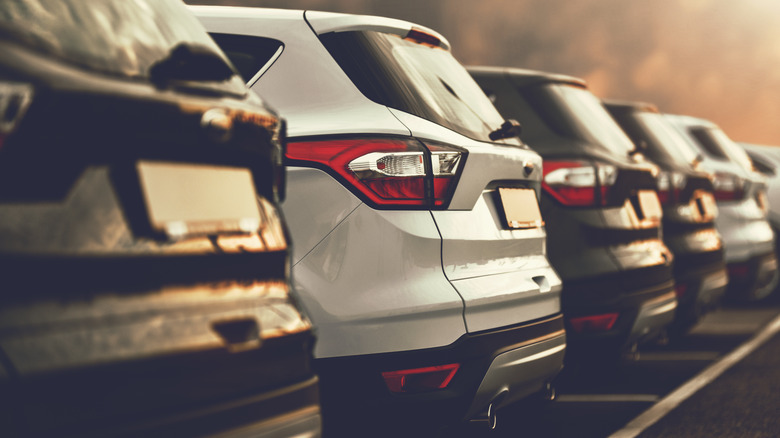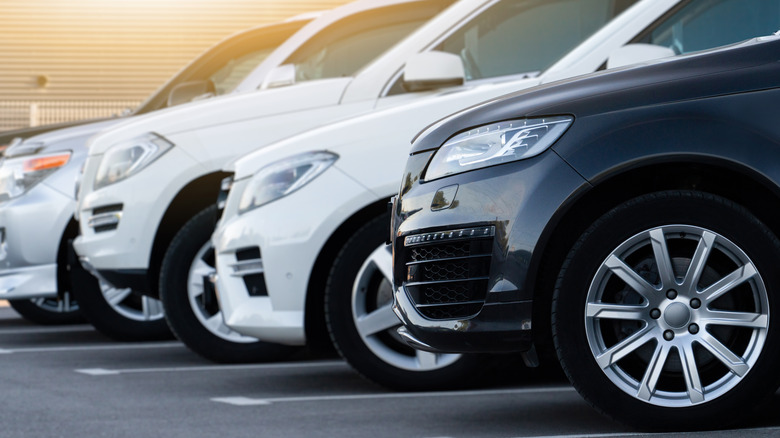Why America's Obsession With SUVs Is More Fatal Than Ever
Americans love big trucks and super-sized SUVs, both of which have always been a part of the nation's big car culture. In 2021, SUV market share increased to 52.5% while sedans dropped down to 24.1%, according to a Q4 2021 report from Kelley Blue Book. Another big trend in 2021 was all-electric vehicles, hybrid, and plug-in hybrids. Americans are shying away from luxury and compact cars and increasing buying luxury and subcompact SUVs instead.
There are many reasons Americans like pickup trucks, SUVs, and other large vehicles, but one of them may be way off track: the perception that the bigger a car, the safer it is. As reported by Hot Cars, many buyers believe that a sedan isn't as capable of withstanding a serious crash as larger SUVs. However, research shows that drivers aren't the only factor to consider when it comes to SUV safety and that while many features may help protect those who are inside the vehicle, pedestrians face a greater risk of fatal injuries when it comes to these models.
Why SUVs pose greater dangers on the streets
The same SUV spec that gives drivers a sense of safety — specifically, an SUV's larger size — is also one of its greatest dangers. The bigger a vehicle, the more elevated its center of gravity is and, therefore, the greater the risk of a rollover at lower speeds, during crashes, and when making sharp turns. While SUV manufacturers have increased rollover security in newer models, many 2020 SUV models received a 4-star score for rollover tests in the NHTSA 5-star security ranking.
But the dangers of SUVs do not end with the risks for those inside the vehicle. The 2020 fatality report from the NHTSA found that pedestrian and cyclist fatalities are climbing, noting a rise from 16% in 2011 to 20% in 2022. The IIHS, meanwhile, reported on March 17 that SUVs and other large consumer vehicles are far more likely to hit pedestrians than smaller cars. The organization concluded that when large vehicles turn, due to their design, blindspots may block drivers' clear sight of people on the road.
IIHS VP of Research Jessica Cicchino added that with the increase in SUV sales, the "crash picture" on the streets is changing. Larger vehicles are also known for causing more severe injuries to pedestrians or nonoccupants. The IIHS calls for manufacturers to adapt SUV designs to avoid blindspots or innovate in technology that can detect people on the streets and alert drivers. Autonomous driving features like automated emergency braking and collision avoidance adapted to pedestrian and cyclist security could also play a significant role in reducing injuries and fatalities. A total of about 54,700 pedestrians were injured in crashes in 2020, the IIHS says.

